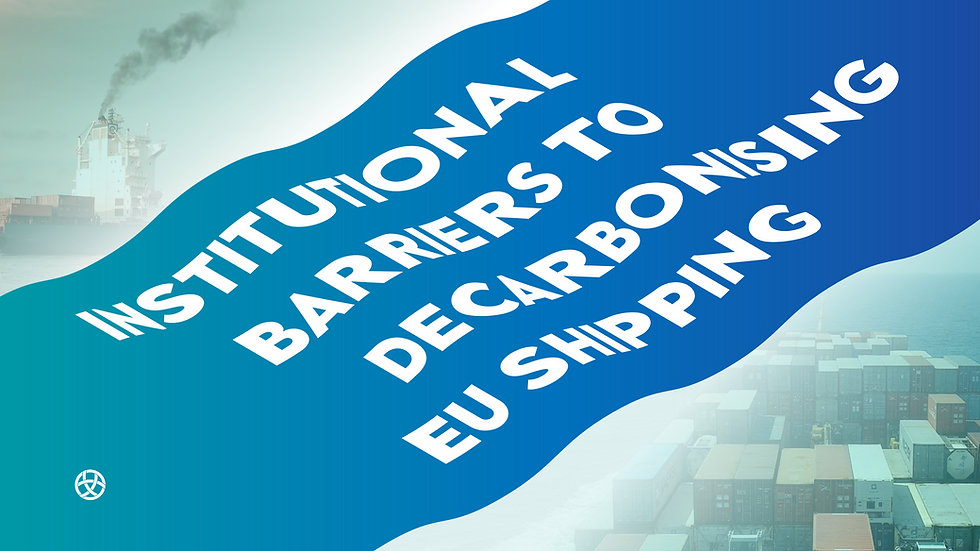Institutional Barriers to Decarbonising EU Shipping
- pavel874
- Dec 11, 2024
- 12 min read

Among the biggest challenges facing the shipping industry is how to continue functioning as a major trading route without damaging the environment and warming the planet. To address carbon emissions from maritime transport, the EU included the latter in its Emissions Trading System. Applying to large ships of 5000 gross tonnage and more, the ETS requires ships to cover their emissions by using allowances.
Depending on where the sailing happens, the ETS will apply to either all greenhouse gases emitted during the voyage (if all ports-of-call are in the EU/EEA), or only half of them (if ports-of-call are in the EU/EEA and third countries).
The ETS maritime will be implemented in stages, with a portion of emissions for which ships need to surrender allowances increasing each year: 40% of emissions reported in 2024, 70% of emissions reported in 2025, and finally 100% emissions reported in 2026 onwards.
These EU allowances (EUAs) are basically carbon credits that allow companies to emit a certain amount of CO2e. If verified emissions exceed EUAs, the excess amount needs to be covered by purchasing more EUAs from auctions (e.g. European Energy Exchange) or on secondary markets.
The inclusion of maritime transport in the ETS signals EU’s strong commitment to decarbonising shipping. However, the success of ETS maritime is hindered by institutional barriers identified through our interviews with key industry actors.
There are different kinds of institutional barriers that affect power dynamics between cargo owners (shippers) and vessel owners (shipping companies), and that impact emission-reduction strategies and decision making in the shipping value chain.
Learn more about them by expanding the headings below.
Institutional barriers
Actor eligibility
The barrier happens when rules and processes limit the ability of certain actors to play a meaningful role in governance.
Rules about who participates and how can become a barrier when actors critical to the effective ETS implementation, such as shippers, have limited opportunities to influence decision-making processes. A representative of the shippers association said in an interview:
“Shippers are not involved in decision-making and implementation processes. This makes it difficult for us to be heard on the subject, and there is no designated contact person... Lack of organisation on the part of [EU] institutions and/or ministries to answer clearly about the problems undermines the ability to implement concrete solutions within a defined timeframe. So, getting the right information, and making sure everyone plays the game is a problem”.
Lack of participation makes it difficult for this group to clearly understand how their challenges are being addressed. This creates fears and uncertainties about the future outcome of the ETS.
Actor roles and responsibilities
Actor control
Actor accountability
Conflict mechanisms
Development and use of knowledge
Scale of institutions
Institutionalised incentives
The analysis of institutional barriers is based on the framework co-developed with PERMAGOV stakeholders.







Commentaires